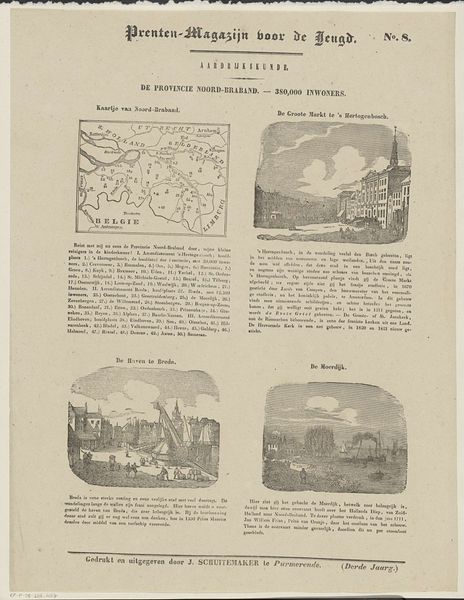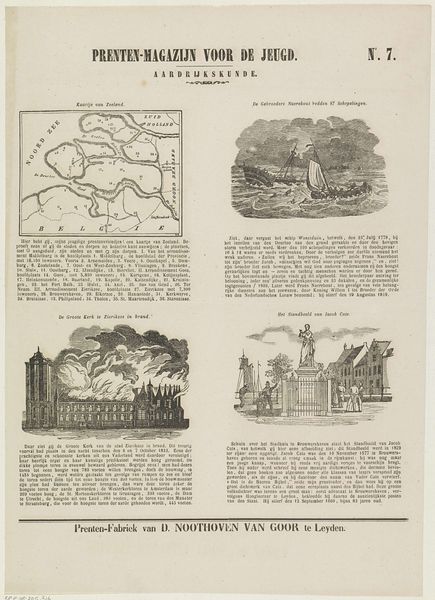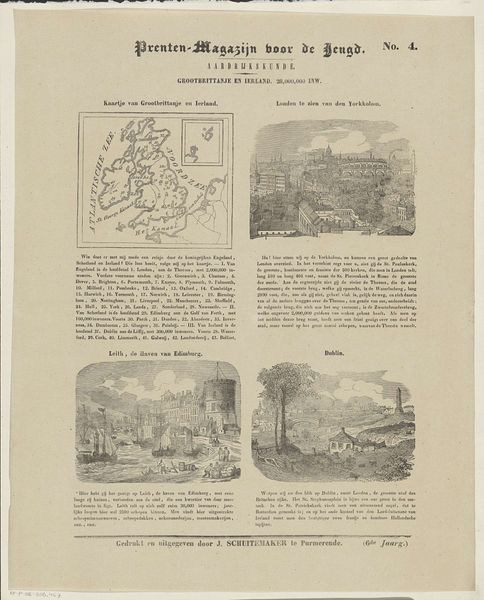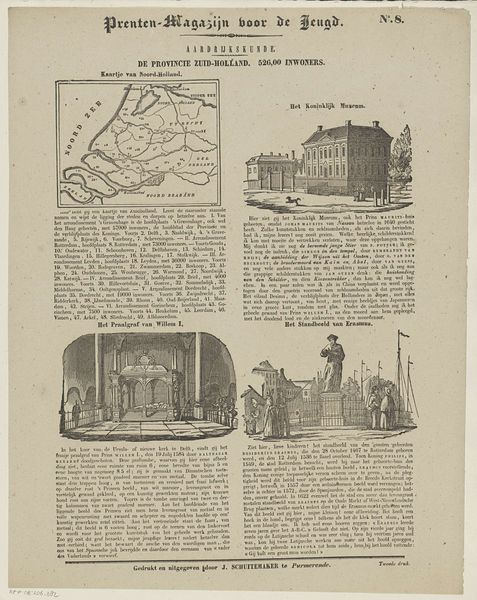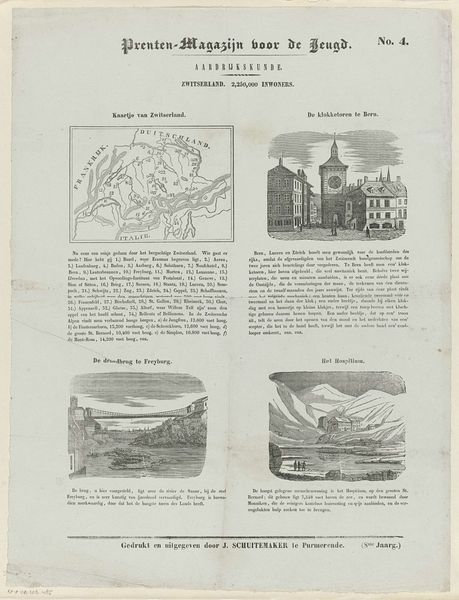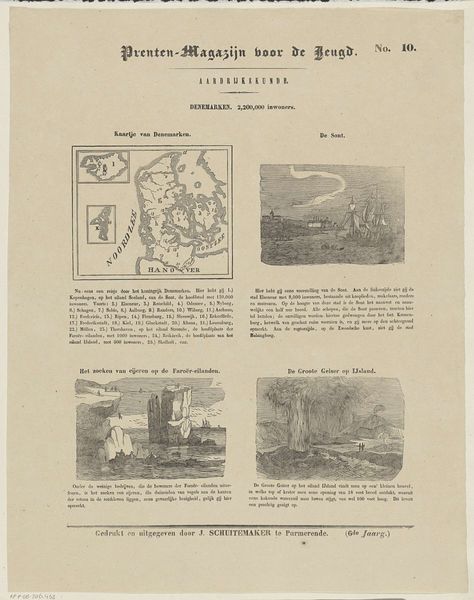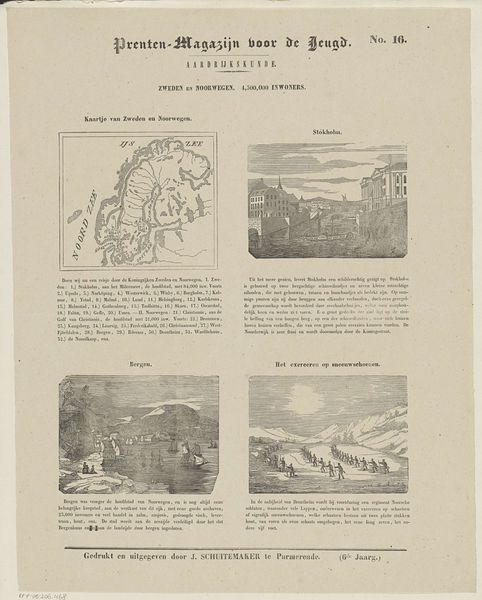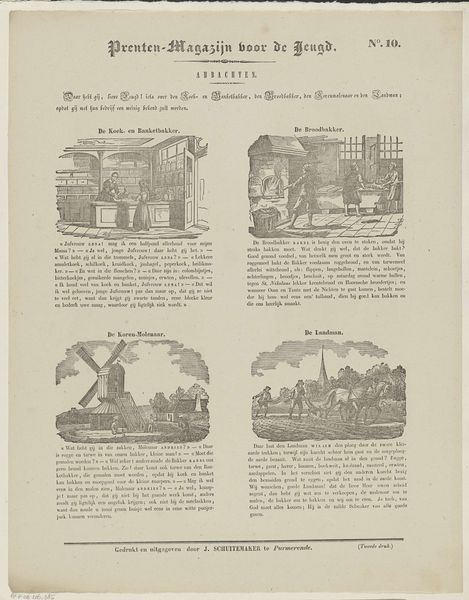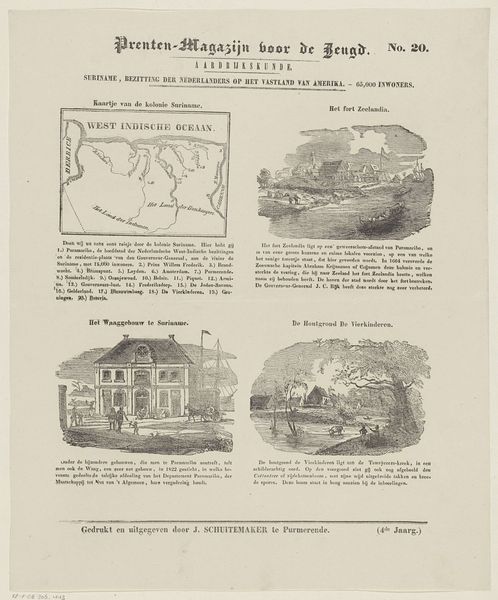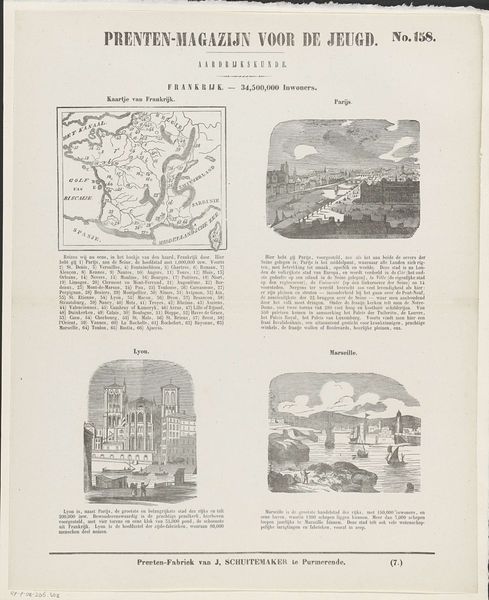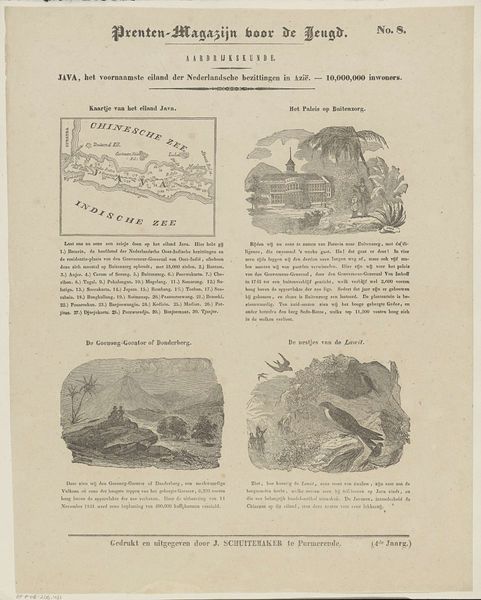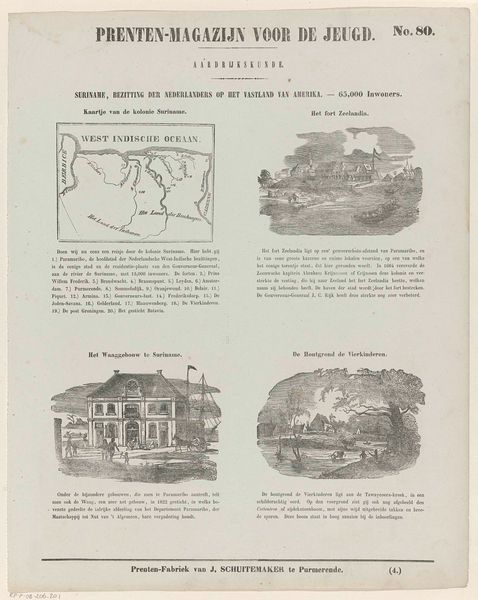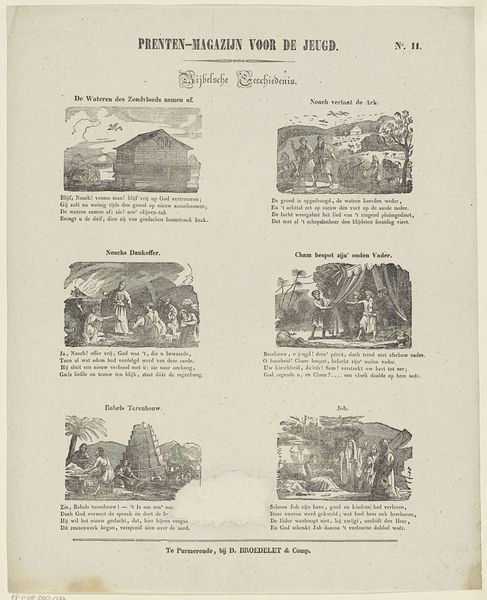
graphic-art, print, textile, engraving
#
graphic-art
#
narrative-art
#
dutch-golden-age
# print
#
landscape
#
textile
#
cityscape
#
engraving
Dimensions: height 427 mm, width 338 mm
Copyright: Rijks Museum: Open Domain
Curator: This is a fascinating broadsheet from 1842, titled "De provincie Zeeland," residing in the Rijksmuseum’s collection. What are your immediate thoughts about it? Editor: Immediately, a strong sense of storytelling emerges—a sort of vintage newsreel. There’s this mix of cartography, disaster, heroism, and civic pride; all rendered in detailed little engravings. It's charmingly archaic. Curator: You picked up on something important: its graphic economy. As an iconographer, what strikes me is how concisely each vignette conveys layered historical, geographical, and cultural information. We see a map, then scenes: a shipwreck rescue, a church ablaze, and a monument unveiling. Editor: The burning church grabbed me first – such intense, theatrical flames licking around the building’s gothic frame. There’s a very tangible drama here, distilled to this single, intense scene of destruction. How might locals at the time respond, knowing what the fire meant in terms of cultural heritage? Curator: Fires, both literal and metaphorical, always carry potent symbolic weight, indicating upheaval and transformation. It mirrors our era’s fascination with destruction—and the Zeeland population experienced many naval battles. Also notice the positioning next to a shipwreck image. Water and fire were two enemies of the era! Editor: The placement is astute—Zeeland, caught between two disasters, almost defines it by forces it needs to battle. Speaking of force, how does the statue of Jacob Cats fit within that theme? A rather stately but serene addition here. Curator: Cats was a beloved Dutch poet and statesman, known for his moralistic verse and role in public life. His statue here becomes an emblem of civic virtue and stability, offering solace and an example in contrast to catastrophe or natural disaster. It is about grounding the people into pride for their province. Editor: What I love most, ultimately, is its ability to distill complex ideas into simple, impactful images—inviting contemplation without didacticism. It almost is the news for a small community with little access to information about outside forces. Curator: Precisely—a carefully curated glimpse into the province's very soul through these detailed engravings, allowing an enduring connection.
Comments
No comments
Be the first to comment and join the conversation on the ultimate creative platform.
